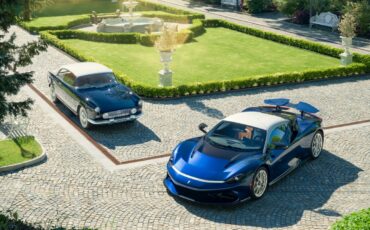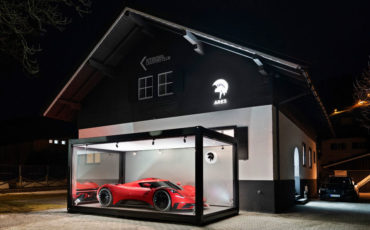
In a landmark achievement, the Aspark SP600, a production intent prototype hypercar, has become the world’s fastest electric hypercar, clocking a remarkable top speed of 438.7kph. This record-breaking feat was realized through the dedicated efforts of Manifattura Automobili Torino (M.A.T.) in collaboration with tire specialist Bridgestone and driven by professional racer Marc Basseng.
A Vision Realized
The Aspark SP600’s journey to this historic moment began with the vision of Aspark CEO Masanori Yoshida, whose company had previously set benchmarks with the Aspark Owl, renowned as the fastest accelerating electric hypercar. For this new project, Aspark once again partnered with M.A.T., entrusting them with the development and manufacturing of a hypercar capable of shattering the world top speed record for electric vehicles.
Collaboration and Innovation
To achieve this extraordinary speed, M.A.T. sought the expertise of Bridgestone to develop a custom-engineered tire. Bridgestone rose to the challenge with bespoke Potenza Race tires designed specifically for the SP600, ensuring they could handle speeds exceeding 420kph while managing the vehicle’s weight and driving dynamics.
The SP600 underwent rigorous testing at M.A.T.’s headquarters in Torino, Italy. This included extensive virtual and physical evaluations, wind tunnel validation, and numerous track testing sessions. M.A.T. meticulously handled the vehicle’s complete development, from powertrain and software integration to suspension and chassis design, as well as software calibration and the bespoke battery’s design and production.
Record-Breaking Achievement
On June 8th, during the second attempt of the day at Automotive Testing Papenburg, Marc Basseng flawlessly piloted the Aspark SP600 to its record-breaking speed of 438.7kph. This achievement was precisely measured using the certified Racelogic V-Box, a high-precision GPS-based device provided by the ATP proving ground.
The event was attended and supported by numerous marketing and premium partners, including the Supercar Owner Circle, who backed the attempt from its inception. Key executives from Aspark, M.A.T., and Bridgestone were present to witness this monumental accomplishment.
Statements from Key Figures
Masanori Yoshida, Aspark CEO: “It has been about 10 years since we started making the OWL Hypercar. We aimed for the world’s Fastest Acceleration car, and then attempted and achieved the top speed world record today. This technical capability inspires all involved to personal excellence and to challenge and grow in leaps and bounds into the future.”
Steven De Bock, Bridgestone VP EMEA Sales and Original Equipment:
“It was a big excitement on this first attempt for the record, which we immediately saw the potential of the cooperation between the car and tires. The whole team at Bridgestone worked extremely hard to deliver this project in such a short period, another testimonial of our technical capabilities and how we cooperate with our partners.”
Paolo Garella, M.A.T. CEO and Founder:
“This record represents a milestone in the continued growth of M.A.T., a company that today represents the best of the Italian tradition in the automotive industry. In 10 years, we have developed more than 11 full vehicle projects and we have demonstrated that with the right resources we are second to none. I am very proud of my team and also extremely happy to reach this milestone in the anniversary of the 10 years of foundation of M.A.T. A special thank you to Aspark’s CEO Mr. Masanori Yoshida for his vision, support, and trust in M.A.T., and to the Bridgestone team for taking on the challenge and supporting with their most advanced technology this record attempt.”
Exclusive Interview with Riccardo Garella
In an exclusive interview, Riccardo Garella, Sales and Marketing Manager at M.A.T., provided insights into the development process of the Aspark Owl. Watch the full interview on our YouTube channel here.
This historic achievement not only sets a new benchmark in the electric hypercar segment but also underscores the capabilities and potential of electric vehicles in pushing the boundaries of speed and performance.











